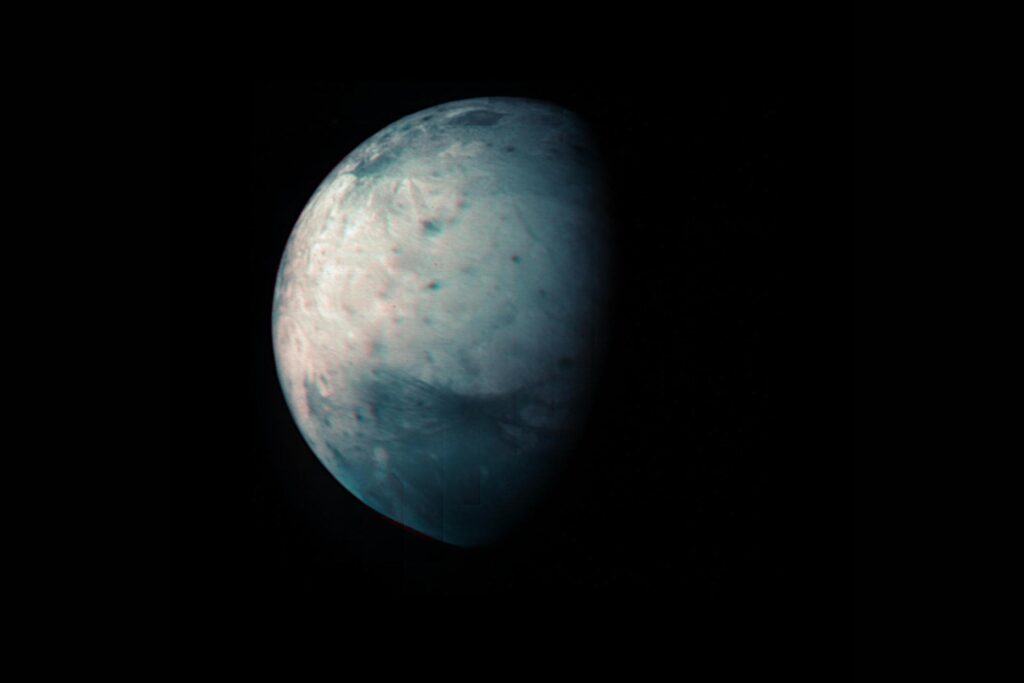
A physicist from the University of Maryland has proposed an innovative approach to detect dark matter by using Ganymede, Jupiter’s largest moon, as an astronomical scale detector. This bold plan, outlined in a recent preprint submitted to arXiv, suggests that Ganymede’s craters could contain evidence of dark matter particles. Dark matter, which is believed to account for approximately 85% of the universe’s mass, remains elusive as it does not interact with light and only weakly engages with other matter.
William DeRocco’s proposal builds on the understanding that larger detectors can enhance the chances of discovering unknown phenomena. He posits that massive dark matter particles may have impacted Ganymede’s thick, icy surface, leaving behind distinctive craters. These craters, referred to as “dark matter craters,” could potentially reveal unique minerals brought to the surface from the moon’s subsurface oceans.
DeRocco’s theory suggests that spacecraft like NASA’s Europa Clipper and the European Space Agency’s (ESA) JUICE could analyze these features during their upcoming missions. He explains that ground-penetrating radar technology might detect columns of melted ice descending deep into Ganymede’s layers.
Astrophysicist Bradley Kavanaugh from the University of Cantabria in Spain, who was not involved in this study, expressed cautious optimism about the proposal’s potential. He emphasized that while the concept is intriguing, definitive evidence of such large dark matter particles remains absent.
The implications of DeRocco’s proposal could extend beyond theoretical discussions. Should NASA or ESA choose to explore this idea further, it might provide unexpected insights into the nature of cosmic dark matter. As Kavanaugh noted, physicists often push the boundaries of conventional thinking to uncover solutions to long-standing mysteries.
Though the idea may sound unconventional, it aligns with the scientific community’s ongoing efforts to investigate dark matter. The absence of evidence against the existence of these massive particles keeps the door open for exploration.
As the scientific community awaits the findings from the upcoming missions, Ganymede may soon become a focal point in the quest to understand one of the universe’s most enigmatic components. Whether or not this moon actually bears the marks of dark matter remains to be seen, but DeRocco’s proposal certainly adds a new dimension to the search for answers.






